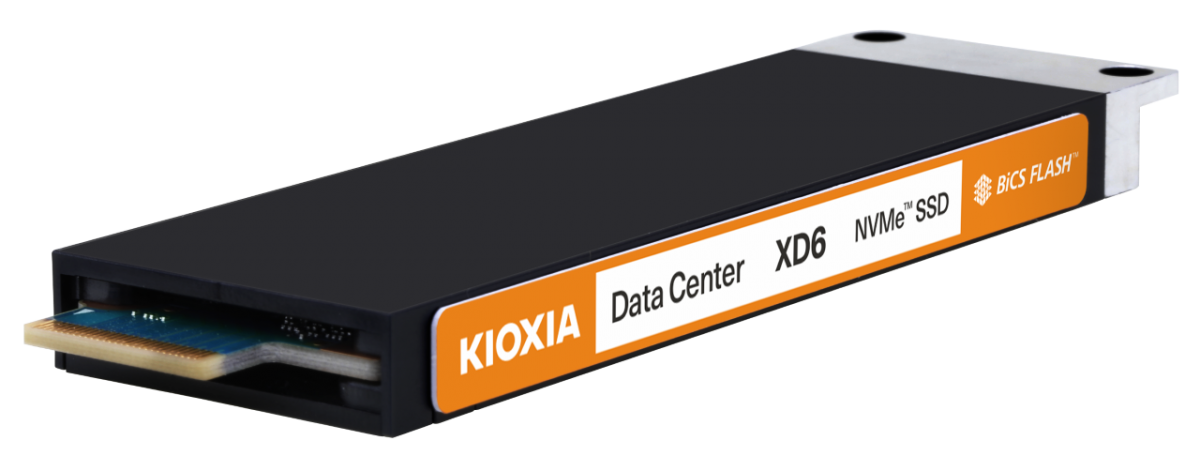Representing the latest innovation in flash storage for servers in cloud and hyperscale data centers, KIOXIA EDSFF E1.S SSDs are designed to optimize system density, efficiency, and management. As defined by the EDSFF consortium and leveraging the OCP NVMe Cloud SSD Specification, the small form factor E1.S replaces the M.2 form factor and delivers greater density, performance, reliability, and thermal management. E1.S is also designed to be hot pluggable for increased serviceability, which is another benefit over M.2.
Utilizing KIOXIA BiCS FLASH™ 3D flash memory, the read-intensive XD6 Series features 1 DWPD endurance is compliant to NVMe 1.3c and PCIe® 4.0 specifications and is available in capacities of 1.92TB and 3.84TB. An option for TCG-Opal 2.0 encryption is included as well.
EDSFF E1.S is targeted at large-scale deployments in hyperscale data centers, due to its ability to scale in terms of capacity, power, performance, and thermals. Drives designed to the OCP NVMe Cloud SSD specification can be used in the new OCP Yosemite V3 platform developed by Meta (formerly Facebook).
“Microsoft and the OCP Storage workgroup demonstrated how an open collaboration across the industry could align hyperscalers, system designers and SSD vendors around next-generation storage form factors,” said Jason Adrian, senior director of Azure Platform Architecture, Microsoft. “The EDSFF E1.S form factor is the future of flash storage in hyperscale data centers, including Azure platforms. Solid state disks designed to the OCP NVMe Cloud SSD specification, such as the KIOXIA XD6 Series, will power the next generation of EDSFF E1.S-based servers.”
“We are pleased to offer our customers substantial advantages and subsequently an improvement in TCO through our new drives that are thermally more efficient, offer improved cooling while providing much higher performance,” said Frederik Haak, Senior Manager SSD Marketing & Engineering at KIOXIA Europe GmbH. “New specifications and form factors, such as EDSFF are the advancements that datacentre and edge application need for more efficient, optimized flash memory deployment.”




